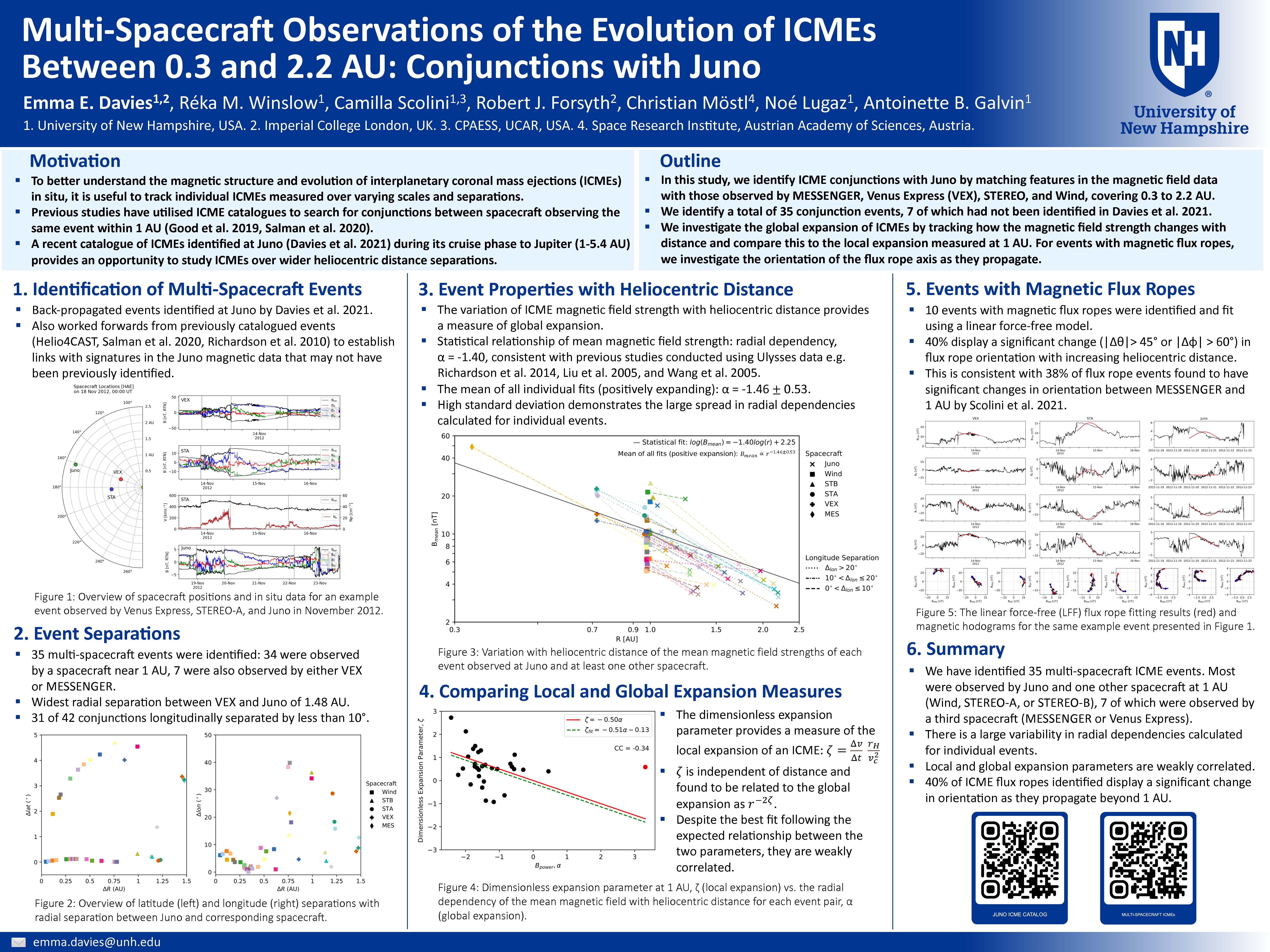Authors: Emma Davies (Institute for the Study of Earth, Ocean, and Space, University of New Hampshire, Durham, New Hampshire, USA), Réka Winslow (Institute for the Study of Earth, Ocean, and Space, University of New Hampshire, Durham, New Hampshire, USA), Camilla Scolini (Institute for the Study of Earth, Ocean, and Space, University of New Hampshire, Durham, New Hampshire, USA), Robert Forsyth (Department of Physics, Imperial College London, London, UK), Christian Möstl (Space Research Institute, Austrian Academy of Sciences, Graz, Austria), Noé Lugaz (Institute for the Study of Earth, Ocean, and Space, University of New Hampshire, Durham, New Hampshire, USA), Antoinette Galvin (Institute for the Study of Earth, Ocean, and Space, University of New Hampshire, Durham, New Hampshire, USA)
We present a catalogue of 35 interplanetary coronal mass ejections (ICMEs) observed by the Juno spacecraft during its cruise phase to Jupiter in conjunction with at least one other spacecraft at heliocentric distances near or less than 1 AU (by MESSENGER, Venus Express, Wind, or STEREO). Previous ICME catalogues are used to find conjunctions between spacecraft, and events with magnetic field features that can be matched unambiguously across different spacecraft are selected. We conduct a multi-spacecraft analysis of ICME properties between 0.3 and 2.2 AU: we first investigate the global expansion of ICMEs by tracking the variation in magnetic field strength with increasing heliocentric distance of individual events, finding significant variability in magnetic field relationships for individual events in comparison with statistical trends. With the availability of plasma data at 1 AU, local and global expansion rates are compared; despite following expected trends, the local and global expansion rates are weakly correlated. Finally, for those events with clearly identifiable magnetic flux ropes, we investigate how the orientation of the flux rope axis changes as they propagate; we find that 64% of events displayed a decrease in inclination with increasing heliocentric distance, and 40% of events undergo a significant change in orientation between observations at the innermost spacecraft and Juno. The multi-spacecraft catalogue produced in this study provides a valuable link between ICME observations in the inner heliosphere and beyond 1 AU, contributing to our understanding of ICME evolution in situ. We intend the catalogue to be a useful resource for future studies of ICMEs and space weather research at Earth and other planets.


